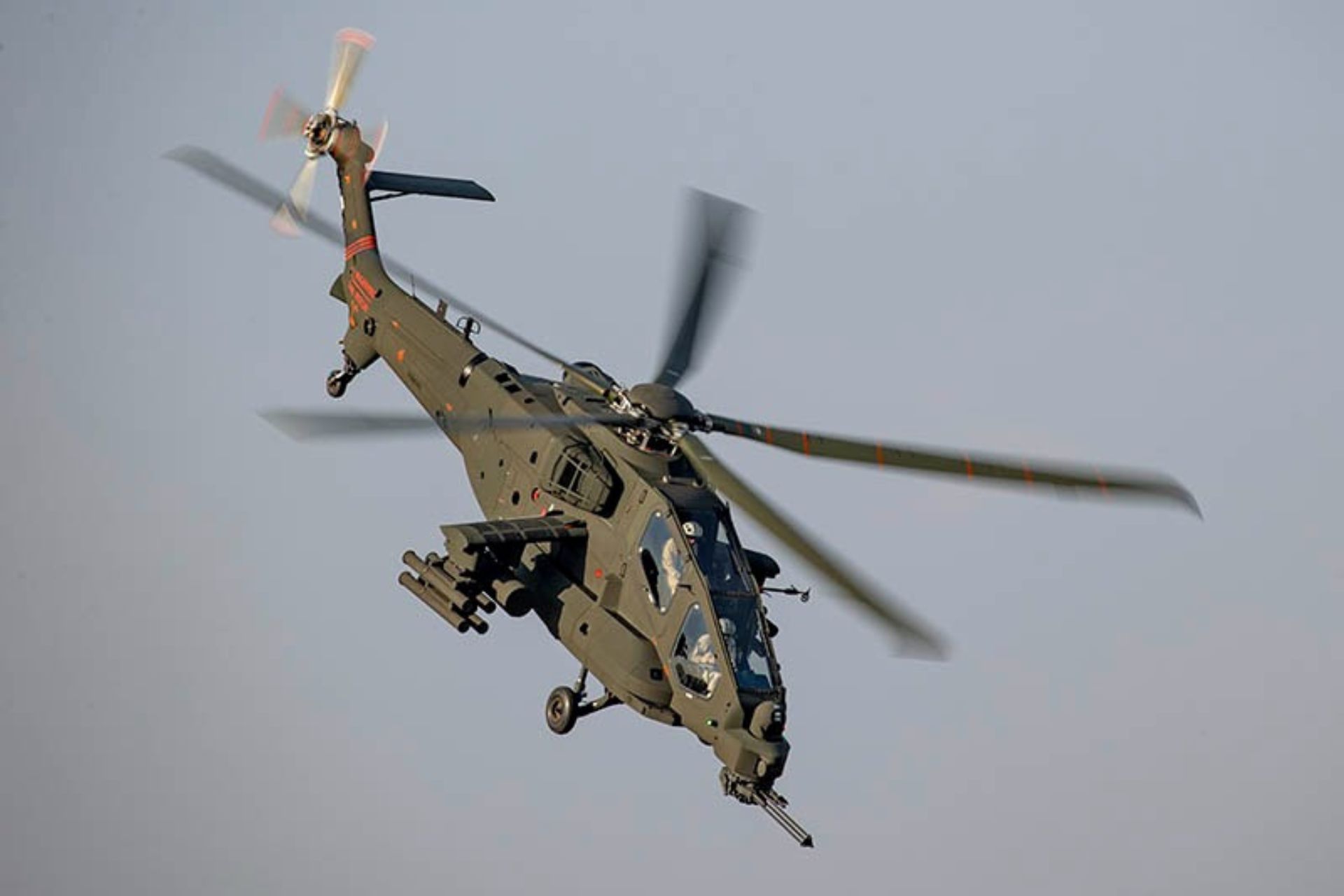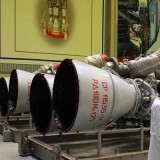Italy Invests in Leonardo AW249 Attack Helicopters to Enhance Air Support and Reconnaissance

{loadposition bannertop}
{loadposition sidebarpub}
Italy is advancing the modernization of its armed forces with the procurement of a new batch of AW249 attack helicopters from Leonardo. This initiative is part of the renewal program for the Italian Army’s helicopter fleet, gradually replacing the aging A129 Mangusta, which has been in service since the 1990s. A dedicated budget has been allocated by the Italian Ministry of Defence, enabling an initial order of 17 aircraft out of a planned total of 48. Deliveries are expected to begin in 2027, marking a key phase in the effort to strengthen Italy’s military aviation capabilities.
Follow Army Recognition on Google News at this link
The AW249’s weaponry combines offensive and defensive capabilities, enabling it to perform various missions, including close air support and air interdiction (Picture source: Leonardo)
According to reports from Rivista Italiana Difesa, Leonardo has already produced four units of the AW249: one prototype and three pre-production aircraft. These pre-production models will not enter operational service but will remain with Leonardo in collaboration with the Italian Army to continue testing and integrating new weapons and systems. Since November 2023, trials have been conducted on various weaponry, including the TM197B 20 mm three-barrel cannon developed by OTO Melara and a set of unguided rockets. The AW249 will also be equipped with Israeli Spike anti-tank missiles, enhancing its capability against armored vehicles and fortified positions.
The AW249 is a next-generation attack helicopter designed to meet the demands of modern conflicts. It features an open architecture and an advanced battlefield management system, ensuring full interoperability with other military platforms, including drones, with which it can operate in a crewed-uncrewed teaming configuration. Its optimized connectivity allows integration into a digital warfare network, enabling real-time information sharing with both ground and air units. The helicopter is equipped with an ergonomic cockpit featuring high-resolution touchscreen displays and an advanced human-machine interface, facilitating piloting and reducing crew workload. This design significantly enhances situational awareness, a critical asset in high-intensity combat operations.
Powered by two GE Aviation CT7-8E6 engines, each producing 2,500 horsepower (1,860 kW), the AW249 reaches a cruise speed of 287 km/h and has a maximum range of 796 km, allowing it to conduct a wide range of operations, including deep-strike missions behind enemy lines. It is designed for operation in extreme climatic conditions, from high temperatures in desert environments to high-altitude missions in freezing temperatures. With a maximum takeoff weight between 7,500 and 8,000 kg, nearly twice that of the AW129, it offers increased payload capacity for both weaponry and fuel, enhancing endurance and operational flexibility.
The AW249’s weaponry combines offensive and defensive capabilities, enabling it to perform various missions, including close air support and air interdiction. In addition to its integrated TM197B 20 mm three-barrel cannon, it features six underwing hardpoints capable of carrying a range of guided and unguided missiles, including 70 mm rockets, infrared-guided air-to-air missiles, and radiofrequency or fiber-optic guided air-to-ground missiles. To extend its operational range, the helicopter can also be fitted with external fuel tanks mounted under the wings.
In terms of protection, Leonardo has incorporated advanced technologies to ensure high survivability on the battlefield. The aircraft is equipped with self-sealing fuel tanks, reducing the risk of fire in case of impact, along with reinforced armor to protect the crew. Its design includes a structure resistant to ballistic impacts, increasing the likelihood of returning safely even after sustaining damage. For electronic warfare, the AW249 features automatic countermeasure systems, radar jamming capabilities, and reduced radar and infrared signatures, making detection and engagement by enemy air defenses more difficult.
Developed as an evolution of the AW129, the AW249 retains certain design elements while introducing significant improvements in performance, payload, and operational connectivity. Its architecture allows it to operate in contested environments and integrate seamlessly into multi-domain missions alongside ground and aerial forces. Following a structured timeline, with intensive flight testing conducted since its maiden flight on August 12, 2022, at Leonardo’s facility in Venarotta, the AW249 is gradually moving toward serial production.
With the initial order of 17 units, Italy is officially launching the production phase of this next-generation attack helicopter, marking a critical step in the future of its military aviation. If the total objective of 48 helicopters is achieved, the AW249 will become a key asset for Italy’s land forces. Its integration into the Italian Army will support evolving operational requirements, providing enhanced firepower, survivability, and connectivity on the battlefield. This investment strengthens Italy’s defense capabilities while positioning Leonardo as a major player in the global market for advanced attack helicopters.

{loadposition bannertop}
{loadposition sidebarpub}
Italy is advancing the modernization of its armed forces with the procurement of a new batch of AW249 attack helicopters from Leonardo. This initiative is part of the renewal program for the Italian Army’s helicopter fleet, gradually replacing the aging A129 Mangusta, which has been in service since the 1990s. A dedicated budget has been allocated by the Italian Ministry of Defence, enabling an initial order of 17 aircraft out of a planned total of 48. Deliveries are expected to begin in 2027, marking a key phase in the effort to strengthen Italy’s military aviation capabilities.
The AW249’s weaponry combines offensive and defensive capabilities, enabling it to perform various missions, including close air support and air interdiction (Picture source: Leonardo)
According to reports from Rivista Italiana Difesa, Leonardo has already produced four units of the AW249: one prototype and three pre-production aircraft. These pre-production models will not enter operational service but will remain with Leonardo in collaboration with the Italian Army to continue testing and integrating new weapons and systems. Since November 2023, trials have been conducted on various weaponry, including the TM197B 20 mm three-barrel cannon developed by OTO Melara and a set of unguided rockets. The AW249 will also be equipped with Israeli Spike anti-tank missiles, enhancing its capability against armored vehicles and fortified positions.
The AW249 is a next-generation attack helicopter designed to meet the demands of modern conflicts. It features an open architecture and an advanced battlefield management system, ensuring full interoperability with other military platforms, including drones, with which it can operate in a crewed-uncrewed teaming configuration. Its optimized connectivity allows integration into a digital warfare network, enabling real-time information sharing with both ground and air units. The helicopter is equipped with an ergonomic cockpit featuring high-resolution touchscreen displays and an advanced human-machine interface, facilitating piloting and reducing crew workload. This design significantly enhances situational awareness, a critical asset in high-intensity combat operations.
Powered by two GE Aviation CT7-8E6 engines, each producing 2,500 horsepower (1,860 kW), the AW249 reaches a cruise speed of 287 km/h and has a maximum range of 796 km, allowing it to conduct a wide range of operations, including deep-strike missions behind enemy lines. It is designed for operation in extreme climatic conditions, from high temperatures in desert environments to high-altitude missions in freezing temperatures. With a maximum takeoff weight between 7,500 and 8,000 kg, nearly twice that of the AW129, it offers increased payload capacity for both weaponry and fuel, enhancing endurance and operational flexibility.
The AW249’s weaponry combines offensive and defensive capabilities, enabling it to perform various missions, including close air support and air interdiction. In addition to its integrated TM197B 20 mm three-barrel cannon, it features six underwing hardpoints capable of carrying a range of guided and unguided missiles, including 70 mm rockets, infrared-guided air-to-air missiles, and radiofrequency or fiber-optic guided air-to-ground missiles. To extend its operational range, the helicopter can also be fitted with external fuel tanks mounted under the wings.
In terms of protection, Leonardo has incorporated advanced technologies to ensure high survivability on the battlefield. The aircraft is equipped with self-sealing fuel tanks, reducing the risk of fire in case of impact, along with reinforced armor to protect the crew. Its design includes a structure resistant to ballistic impacts, increasing the likelihood of returning safely even after sustaining damage. For electronic warfare, the AW249 features automatic countermeasure systems, radar jamming capabilities, and reduced radar and infrared signatures, making detection and engagement by enemy air defenses more difficult.
Developed as an evolution of the AW129, the AW249 retains certain design elements while introducing significant improvements in performance, payload, and operational connectivity. Its architecture allows it to operate in contested environments and integrate seamlessly into multi-domain missions alongside ground and aerial forces. Following a structured timeline, with intensive flight testing conducted since its maiden flight on August 12, 2022, at Leonardo’s facility in Venarotta, the AW249 is gradually moving toward serial production.
With the initial order of 17 units, Italy is officially launching the production phase of this next-generation attack helicopter, marking a critical step in the future of its military aviation. If the total objective of 48 helicopters is achieved, the AW249 will become a key asset for Italy’s land forces. Its integration into the Italian Army will support evolving operational requirements, providing enhanced firepower, survivability, and connectivity on the battlefield. This investment strengthens Italy’s defense capabilities while positioning Leonardo as a major player in the global market for advanced attack helicopters.





